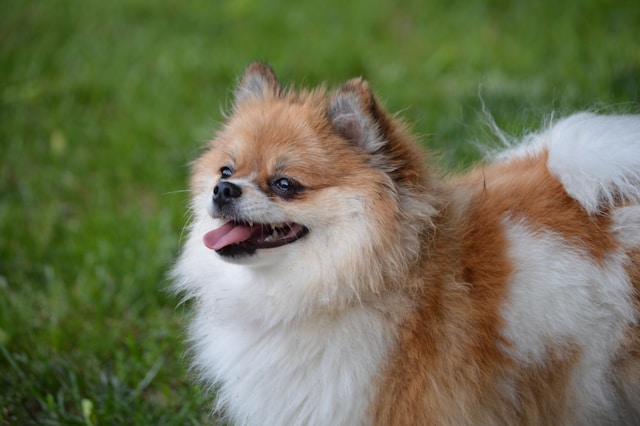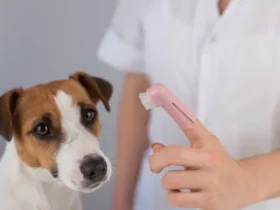Introduction
Trimming your dog’s nails is an essential part of their grooming routine. Overgrown nails can cause discomfort, lead to injuries, and even affect your dog’s posture and mobility. While many pet owners rely on professional groomers, learning how to trim your dog’s nails at home can save you time and money, and it can help reduce your dog’s stress by keeping them in a familiar environment. This guide will walk you through the process step by step, ensuring that both you and your dog have a positive experience.
Why Nail Trimming is Important
- Prevent Discomfort and Pain: Overgrown nails can curl and dig into the paw pads, causing pain and discomfort.
- Avoid Injuries: Long nails can get caught on surfaces, leading to broken nails or injuries to your dog’s paws.
- Promote Healthy Posture: Long nails can affect how your dog walks, potentially leading to joint or back problems over time.
- Prevent Damage: Sharp nails can damage floors, furniture, and even your skin when your dog jumps or plays.
Understanding Your Dog’s Nails
Before you start trimming, it’s essential to understand the anatomy of your dog’s nails:
- The Quick: The quick is a blood vessel that runs through the nail. Cutting into the quick can cause pain and bleeding.
- The Nail: The part of the nail that extends beyond the quick can be safely trimmed. The nail is harder than the quick and doesn’t have nerves or blood vessels.
- Color and Length: Light-colored nails are easier to trim because the quick is visible, while dark nails require more caution since the quick isn’t visible.
Tools You’ll Need
Having the right tools makes nail trimming easier and safer:
- Dog Nail Clippers: Choose between scissor-style, guillotine-style, or grinder tools. Each has its advantages, depending on your dog’s size and nail type.
- Styptic Powder: This is used to stop bleeding if you accidentally cut the quick.
- Treats: Rewarding your dog during and after trimming helps create a positive association.
- A Calm Environment: Ensure your dog is relaxed and in a quiet space.
Preparing Your Dog for Nail Trimming
- Start Early: If possible, get your dog used to having their paws handled and nails trimmed from a young age.
- Handle Paws Regularly: Regularly touching your dog’s paws can make them more comfortable with nail trimming.
- Introduce the Tools: Let your dog sniff the clippers or grinder before using them, so they become familiar with the tool.
- Short Sessions: Begin with short trimming sessions to avoid overwhelming your dog.
Step-by-Step Guide to Trimming Your Dog’s Nails
1. Inspect the Nails
- Check the Quick: If your dog has light-colored nails, locate the quick. For dark nails, you’ll need to be more conservative with your cuts.
- Identify Long Nails: Focus on the nails that are clearly overgrown.
2. Position Your Dog
- Comfortable Position: Have your dog lie down or sit in a comfortable position. If your dog is anxious, consider having someone help hold them gently.
- Calm Your Dog: Use a soothing voice and offer treats to keep your dog calm throughout the process.
3. Start Trimming
- Hold the Paw Firmly: Gently but securely hold your dog’s paw.
- Angle the Clippers: Position the clippers at a 45-degree angle to the nail.
- Trim in Small Increments: For light nails, trim just before the quick. For dark nails, trim small bits until you see a dark spot (the quick) in the center of the nail.
- Smooth the Edges: Use a nail file or grinder to smooth out rough edges.
4. Dealing with the Quick
- Accidental Cut: If you accidentally cut the quick, don’t panic. Apply styptic powder to stop the bleeding.
- Monitor Your Dog: Offer comfort and treats to reassure your dog.
5. Final Check
- Inspect the Nails: Ensure all nails are trimmed evenly and that there are no sharp edges.
- Reward Your Dog: Give plenty of praise and a special treat to make the experience positive.
Tips for Success
- Stay Calm: Dogs can sense your anxiety, so stay calm and confident during the trimming process.
- Regular Maintenance: Trim your dog’s nails regularly to avoid overgrowth and to make the process easier over time.
- Know When to Stop: If your dog becomes too anxious or agitated, stop and try again later.
Common Mistakes to Avoid
- Cutting Too Much at Once: Trimming too much of the nail at once increases the risk of hitting the quick.
- Rushing the Process: Take your time to ensure both you and your dog remain calm.
- Neglecting Regular Trims: Infrequent trimming makes the process harder and more stressful for your dog.
When to Seek Professional Help
- Severe Anxiety: If your dog is extremely anxious or aggressive during nail trims, it may be best to seek help from a groomer or veterinarian.
- Overgrown Nails: If your dog’s nails are severely overgrown, a professional may need to trim them initially.
Conclusion
Trimming your dog’s nails at home can be a stress-free experience with the right tools, techniques, and patience. Regular maintenance is key to keeping your dog’s nails healthy and ensuring their overall well-being. By following this guide, you’ll be able to confidently trim your dog’s nails and make the process a positive experience for both you and your pet.











Leave a Reply